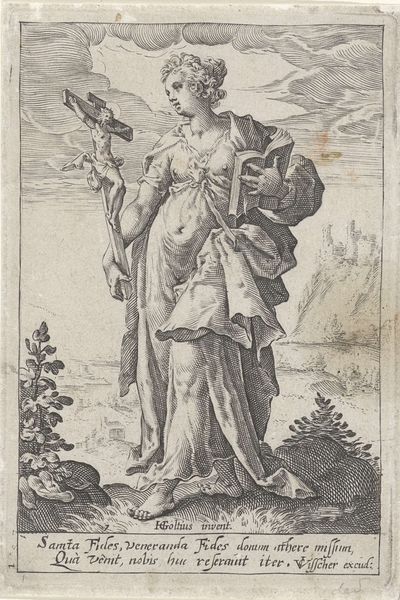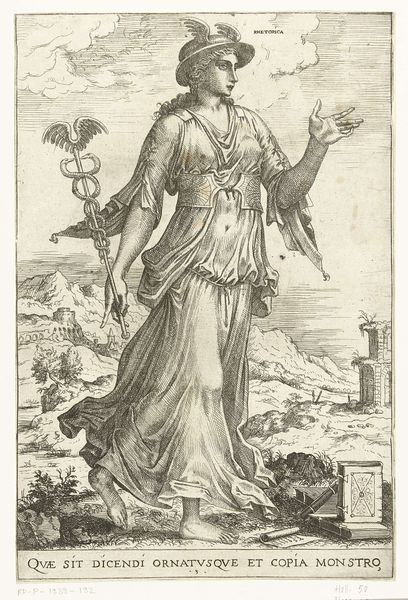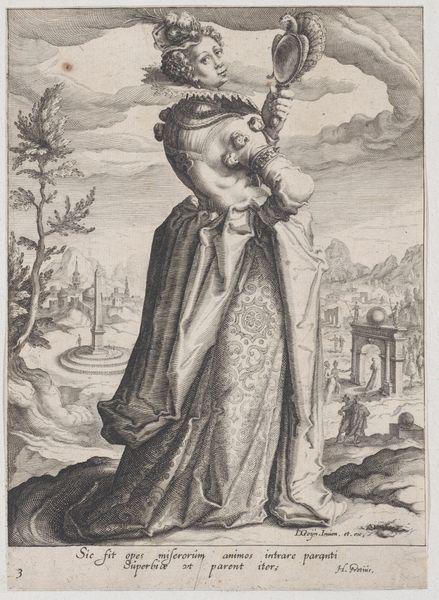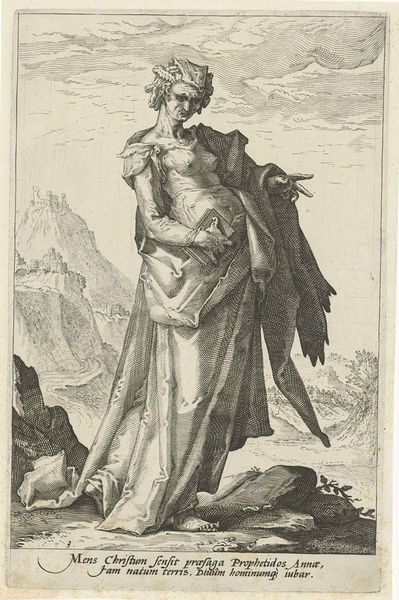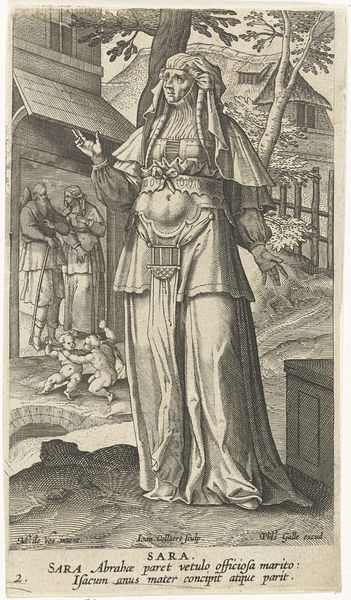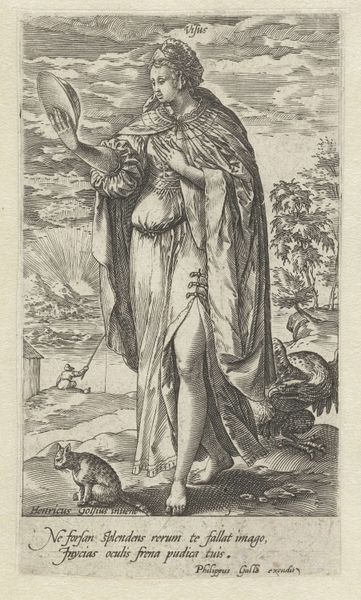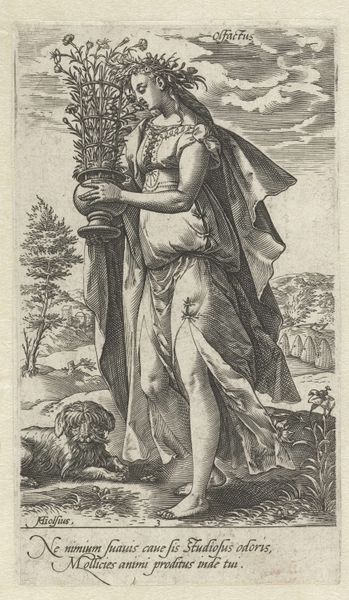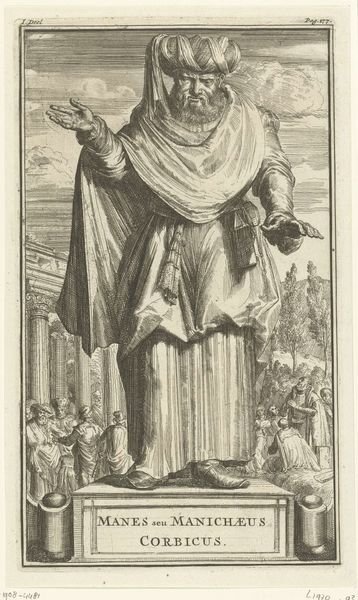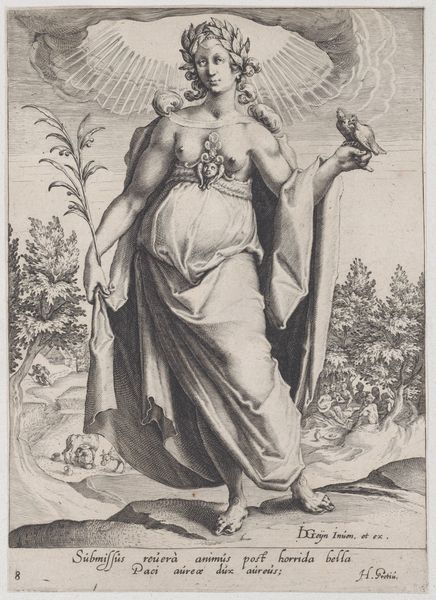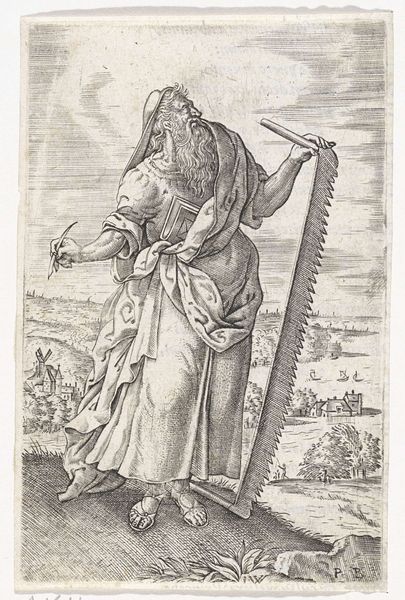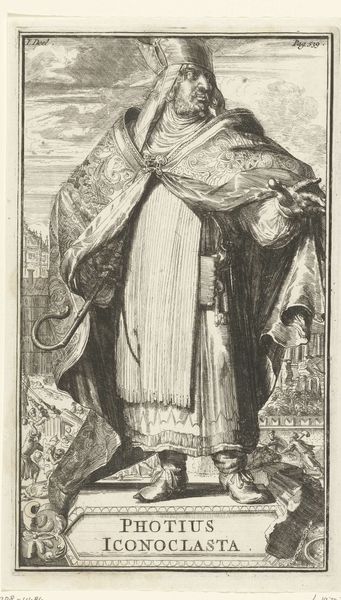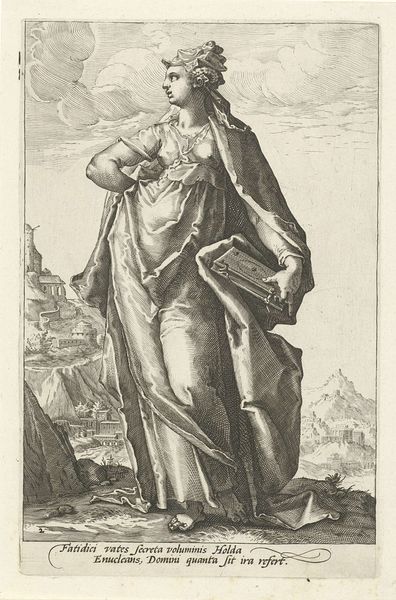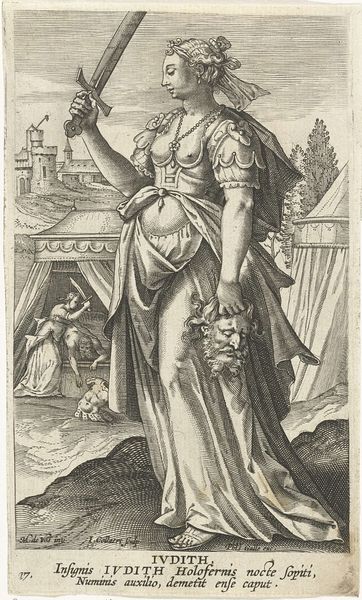
print, engraving
#
portrait
#
allegory
# print
#
mannerism
#
figuration
#
form
#
line
#
history-painting
#
engraving
Dimensions: height 216 mm, width 144 mm
Copyright: Rijks Museum: Open Domain
Curator: This engraving by Jacob Matham, made between 1585 and 1589, is entitled "Hoogmoed (Superbia)" and is currently held in the Rijksmuseum. It presents a full-length allegorical figure. My initial thought is that the engraving embodies a profound sense of vanity. What strikes you first about this representation of pride? Editor: The density of detail! All the fine, curving lines are incredibly busy, like an overactive imagination spilling onto the page. It’s almost claustrophobic, embodying that overwhelming feeling when you get caught up in superficialities. The mirror really grabs me—an invitation to, or perhaps a warning against, obsession with self. Curator: Exactly. Mirrors, since antiquity, have been perceived as both tools for self-reflection and symbols of deception, gateways to illusion and the dangers of vanity. This Superbia holds one aloft, gazing not outward, but at her own reflection, feeding an inflated ego. And consider the peacock at her side... Editor: Of course, the ultimate symbol of pride! And the feathers serve to emphasize the arrogance associated with appearance. This piece makes me think of the challenges of representation then, especially in light of today’s identity politics. Who defines "beauty", and what power structures uphold those standards? Curator: It's a pointed commentary, isn't it? Matham deploys visual language accessible to his contemporary audience: the mirror, the peacock, the extravagant dress, all converging to depict pride as a blinding, isolating force. Superbia believes she surpasses all others; note the inscription at the bottom - literally translated it proclaims, "Exalted artifice overcomes humble truth." The print format also invites discussion. Editor: Definitely. In an age of mass-produced imagery, it makes me question who "owns" these symbols today? Is it any different when we relentlessly project idealized versions of ourselves on social media? Is that a contemporary version of *Superbia*? This image truly encourages deep reflection about human behaviors. Curator: I think it does. These carefully crafted prints served as accessible reminders of the pitfalls of earthly vices. What stays with me is how visual symbols and meanings really stretch throughout time, inviting dialogue across centuries. Editor: Absolutely. Examining this image brings awareness of our present condition and calls to explore new dialogues to counteract arrogance, selfishness, and discrimination through creative means. A crucial task ahead.
Comments
No comments
Be the first to comment and join the conversation on the ultimate creative platform.
